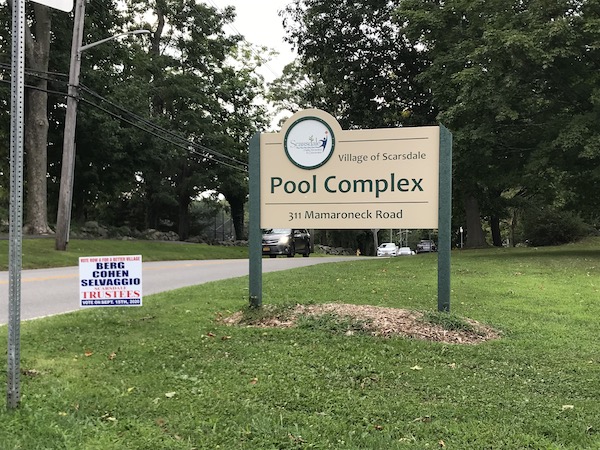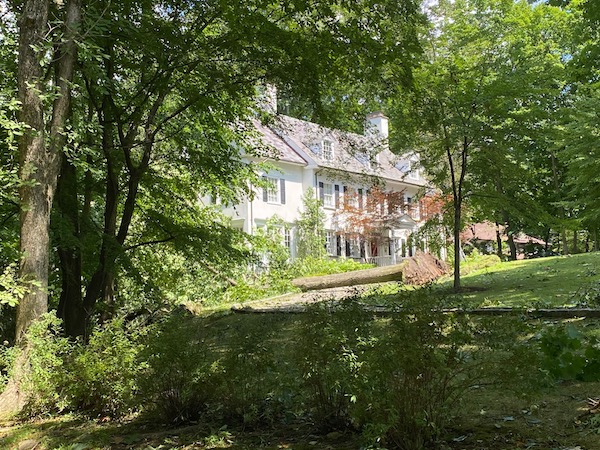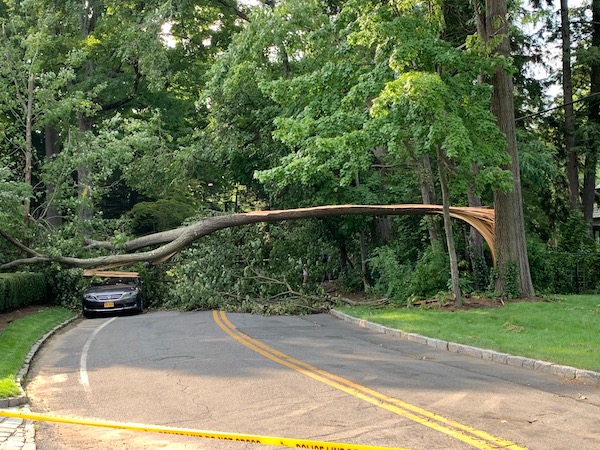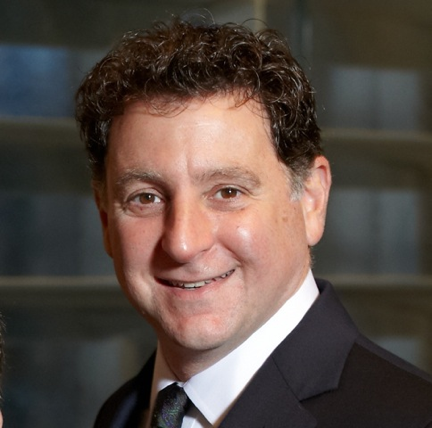Letters in Support of the Voter's Choice Party Candidates
- Details
- Written by: Joanne Wallenstein
- Hits: 2790
 Letter from Voters Choice Party Campaign Char Mayra Kirkendall Rodriguez
Letter from Voters Choice Party Campaign Char Mayra Kirkendall Rodriguez
Scarsdale Voters Choice Party Trustee Candidates Are Ready To Serve You
I strongly support the Scarsdale Voters Choice Party (VCP) Candidates, Row A: Berg, Cohen, and Selvaggio for Village Trustee. I personally know all three of these Scarsdale residents and can attest to how empathetic and helpful they are to residents. I have worked with Bob Berg on multiple Scarsdale Forum committees and know that he is a good listener and he is very analytical about facts and data. As someone whose profession is centered on identifying and mitigating financial risks, I know that the VCP candidates have the expertise, not only to pose the right questions, but also to make favorable policy recommendations. They are sensitive and responsive to Scarsdale’s considerable economic and demographic diversity, which calls for new policy approaches, especially during this crisis when Scarsdale’s median household income has decreased due to job losses or salary and bonus cuts.
The VCP candidates have been working hard to serve you on the Village Board. Even though they are not yet in office, the VCP candidates succeeded in convincing the Scarsdale School Board and Village Boards to allow residents to pay our Village and Scarsdale taxes in two installments, providing respite during these tough times. Additionally, for over two years, members of the VCP have sent numerous letters to the Scarsdale Citizens Non-Partisan Party (SCNPP) Village Board recommending that a long-term financial plan be created, that budgets be stress tested, and that data be provided on how the Freightway Redevelopment project could crowd our schools, train platforms, and roads. I have read through numerous emails, obtained under the Freedom of Information Law, and I could not find any evidence that a financial analysis was conducted to measure how this project could impact our quality of life and taxes. And unfortunately, despite the VCP’s recommendation Scarsdale Village does not have a long-term financial model or plan. Global rating agencies and the Government Finance Officers Association have long recommended that all municipalities have at least a five-year financial plan to help them withstand unexpected crises.
The SCNPP says it represents all of Scarsdale, but it has never had a person of color on its ticket, despite Scarsdale being 25% non-Caucasian. In its very first year of being created in 2017, the VCP had the first minority in the history of Scarsdale run for Village office. Thank you Greenacres resident Carlos Ramírez! I, an American of Mexican background, am one of the co-founders of the VCP and this year’s VCP Campaign Chair. The VCP has actively sought out, and will continue to seek, voters from every demographic group in Scarsdale.
Recently, SCNP supporters barraged local media with letters criticizing the VCP. Rather than providing specific examples of how they know their candidates or what expertise they have, most of the letter writers are asking you to vote for ‘the party,’ clinging to over 100 years of single-party rule in Scarsdale. Where is the SCNPP’s platform? Where is the SCNPP’s plan on how it will remedy a potential $3 million dollar shortfall in Village revenues? What is the SCNPP’s plan for Freightway and a large parking garage near the Village Center and where are the data for these projects? Please do review our candidates’ CVs and our platform on our website www.VotersChoiceParty.com and leave aside the negative campaigning.
For a year, I volunteered in the Scarsdale Procedure Committee, and I know that SCNPP candidates are not asked one single question when they come to present for ten minutes before the Citizens Nominating Committee behind closed doors. As someone who has worked in Russia and numerous emerging markets, I love living in a democracy where I can do my own research about candidates’ personal and professional backgrounds. Why shouldn’t all Scarsdale residents have the right to ask all candidates questions directly about important municipal issues that affect our daily lives?
This has been a very rough year and everyone is very busy. As your friend and neighbor, I urge you to make time to vote in this very important Scarsdale Village Trustee election by Tuesday, September 15th. Please participate in our democracy. Voter participation in Scarsdale local elections is incredibly low; usually less than 10% of registered voters participate because there usually is no choice.
You can download an Absentee Ballot Request Form here and take it to Village Hall, 1001 Post Road, until September 14th at 5:00pm. You will be given a ballot and you can vote right there and then. Election Day is September 15 at the Scarsdale Congregational Church, 1 Heathcote Road; polls are open 6am-9pm.
After you vet all six candidates, I hope you will join me in voting for Row A: Berg, Cohen, and Selvaggio, candidates who are inclusive of all of us.
Mayra Kirkendall-Rodríguez
Campaign Chair
Scarsdale Voters Choice Party
Letter from Judy Kerr
Why I Support Bob Berg
Bob Berg is no stranger to Scarsdale civic life, his community volunteer work is extensive, ranging from helping to coach Little League teams to serving in important civic leadership positions, including President of Crane Berkley’s Neighborhood Association, President and Vice President of the Scarsdale Forum, Chair of the Citizens Nominating Committee and a member of the Village’s Board of Assessment Review. In each of these roles, Bob has worked collaboratively with other volunteers to complete complex projects that benefit the community. He applies his academic (MBA and JD) and professional accomplishments to his volunteer work to benefit the community at large. More than ever, we need someone like Bob to be on our Village Board looking after our municipal needs.
Underlying Bob’s two decades of volunteer work is an unwavering commitment to the continued improvement of the communications, transparency and accountability from local governing boards to the residents of Scarsdale. In recent years, especially during difficult economic times, Bob has spoken directly to both the Village and School Boards, asking questions, making comments, and suggesting recommended courses of action. The questions that he has posed and the comments he has made have been, at times, understandably, difficult for Board members to hear, however, his public discourse has prompted each Board to make changes which have been supported by the community. Most recently, he and the other two Voters Choice Party candidates (Sean Cohen and Bob Selvaggio) for Village Trustee, have kept trying to help residents financially during these tough times by offering good faith suggestions to the Mayor and current trustees. They proposed $2 million in cuts to the $59 million budget without cutting back on services, furloughing staff, or negatively impacting our Village.
As a volunteer, Bob has demonstrated a high level of integrity and genuineness throughout his public service to Scarsdale residents, both as an exceptional leader and a tireless worker. I enthusiastically support Bob Berg’s candidacy for Trustee of Scarsdale, I hope you can consider to join me to get Bob elected, so he can help residents address the serious issues facing our village more directly. Thank you!
Sincerely,
Judy Kerr
Fox Meadow
Letter from Paul Diamond
Do We Need the Voters Choice Party?
It used to be that the Citizen Nominating Committee (CNC) would come up with candidates who would be presented to Scarsdale voters come election day without any opposition. Yes, here in Scarsdale our elections past, only presented CNC non-partisan candidates and that was good enough. The ensuing elections then generated about 600 votes from over 5,000 homes. Is this complacency with our system or blind trust?
What about the CNC elected members (who in turn choose the slate of candidates)? This is more a symbolic election than not. In fact, from 2013 to 2019 the votes to select CNC members has remained around 300 (355, 224, 321, 368, respectively). Translation: residents are not involved in who serves on the CNC and therefore not involved in who governs Scarsdale. Historically, with almost no exception, the CNC slate for Mayoral and Trustee positions has prevailed without opposition.
Isn’t something wrong with this picture?
Recently, non-CNC candidates, Voters Choice Party (VCP) candidates, have come forward to challenge this status quo and kindled the fire for candidates to reveal their positions on a number of important issues --education, Village development (i.e. Freightway or attracting retailers), Services, Budgets, etc.. They have held debates and given the public the power to make an informed choice.
How has this impacted our general election? In 2012, 421 votes were cast for Village Trustees and in 2016, 733 votes were cast. In 2017 our community woke up: Why? Independent candidates (VCP) challenged us to think about the issues and whether or not the CNC identified the best candidates from our community to serve. The result: 2,854 votes were cast! This continued in 2018 with almost 1,800 votes cast.
So is VCP challenge to the CNC slate a bad thing or does it provide an opportunity for residents to consider issues and to exercise their right to CHOOSE the best candidate? Is it the whole slate and nothing but the slate or can we be selective to find the best candidates? I choose the later and embrace CHOICE to find the best candidates.
When I look at CNC candidates I feel I cannot embrace the slate of candidates. And, when I look at the VCP slate I see that some candidates are more impressive to me than others. For example, Bob Berg stands out to me as a candidate with a tremendous love for Scarsdale who understanding the issues. Without Bob’s energy, the Freightway Project might have pushed through without sufficient community input. He has served us for some 20 years: Board of Assessment review (7 years); roles on the Scarsdale Forum (Secretary, Vice President, President); and, as Chair, Assessment Revaluation Committee. Bob is in the know.
People like Bob Berg care about our community. Without his dedication and interest Scarsdale would still be sleeping and only a handful of residents/voters would still be making the choice for you of who runs this town.
As a native of Scarsdale who grew up in and has lived here for over 40 years and having been a member of the Forum, Past Neighborhood Association President and Past Chair of the Committee for Historic Preservation, I can attest to the fact that Bob is not just smart, he is qualified and has earned the right to be a Trustee. I leave it to you.
Paul Diamond
Circle Road
Political Signs Litter Scarsdale's Landscape
- Details
- Written by: Joanne Wallenstein
- Hits: 4422
 This is the opinion of site owner Joanne Wallesntein
This is the opinion of site owner Joanne Wallesntein
A bucolic village that protects its landscape, trees and vistas is now covered in a barrage of political signs. Though political and commercial signage in the Village right of way were previously barred by Village code, a challenge to that law has resulted in an onslaught of advertising which some find to be an assault to their senses.
Looking back, political fights were rare in Scarsdale as the Village’s non-partisan system of governance prevented such mudslinging. Rather than elect Village or school leaders in general contested elections, the Village has relied on committees of elected nominators to vet and select candidates for the positions. But in the past few years a persistent group of challengers has contested Scarsdale’s non-partisan system and marred each election with bitter partisanship.
This month, Scarsdale will hold its election for Village Trustees and Village Justice on September 15, a contest that was originally scheduled for March, but delayed by Governor’s orders due to the Covid-19 pandemic.
One of the challengers, Robert Berg, is making another bid for Village Trustee. A lawyer by trade, Berg sued the Village in January 2018, prior to a school bond vote, after Scarsdale police removed signs that Berg had posted in the Village right of way, within 13 feet of the curb of his own home. He claimed this violated his First Amendment rights and sought to prevent the Village from “continuing to interfere irreparably with residents’ Free Speech rights.”
According to Berg, “I filed an action in federal court and sought emergency relief to prevent the Village and Police Department from continuing to interfere irreparably with residents’ Free Speech rights. The following day, the federal judge held an emergency hearing and issued an injunction forbidding the Village and the Police Department from taking any action with respect to residents’ placement of political signs in the Village right of way in front of their homes so long as those signs do not present a traffic or safety hazard. The federal judge found that I had demonstrated irreparable injury and a substantial likelihood of success on the merits. See Berg v. Village of Scarsdale, 2018 WL 740997 (S.D.N.Y. Feb. 6, 2018).”
However, when interpreting this ruling, the Village of Scarsdale did not stop at the front lawn. Instead, they issued a February 2018 temporary restraining order that said, “Effective immediately the enforcement and or removal of any sign placed on the village property or the right of way will cease. The department will not remove any signs placed on village property or right of way nor will a village code summons be issued to a person placing sign on village property or right of way. This will be for any sign, i.e. Commercial or political.”
In short, Villagers were now free to post signs not only on their yards, but anywhere in Scarsdale.
While the Village awaits a decision from the court, Berg’s Voters Choice Party is taking full advantage of the temporary restraining order and plastering lawns and Village properties with political signage for their slate of candidates. The Scarsdale Pool, Village Hall, and traffic islands have become venues for his campaign. Worse, once those signs are gone, we may find signs for dating websites, lawn-care, and food delivery that police will be barred from removing.
Traditionally, even realtors were prohibited from posting “for sale” signs in front of homes on the market. Now, however, we confront a blitzkrieg of signs, in a startling departure from Village norms.
“The taxpayer owns Village properties. That's us,” wrote resident Lee Fischman. “Having political signage placed on Village properties' right of way is akin to appropriating our endorsement. I did not give Berg, Selvaggio and Cohen permission to advertise in front of taxpayer property and neither did the judge.” Deriding the signs as a “public eyesore” in the “midst of summery greenery,” Fischman cited a Supreme Court decision, Los Angeles vs. Vincent (1984), in which the high court deemed signs posted on public property “a significant substantive evil within the City’s power to prohibit.”
So what to do? In the face of this visual assault, the Scarsdale Citizens Nonpartisan Party produced some  signs of their own to defend their nominated slate of candidates. They requested that supporters place signs only on their own lawns, and welcome the removal of any of their signs not placed in front of residential property.
signs of their own to defend their nominated slate of candidates. They requested that supporters place signs only on their own lawns, and welcome the removal of any of their signs not placed in front of residential property.
Was the lawsuit civic-minded as Berg claims? Does it help or hurt the taxpayer? It’s not clear how much money the Village has already spent defending themselves in court but it is evident that many do not like the signage. It’s yet to be seen whether this pageantry will assist the Voter’s Choice Party in their bid to defeat the candidates selected in the non-partisan process. My bet is that the signage will confuse and annoy many that the challengers are seeking to persuade.
The real question is, will taxpayers benefit from selecting trustees who file costly lawsuits and litter our neighborhood? As their sign reads, are they really for a “better” Village?
Spraying Yards for Mosquitoes and Ticks: Is it Worth It?
- Details
- Written by: Joanne Wallenstein
- Hits: 3801
 This article was submitted by Susan Morse of Larch Lane and the opinions expressed are those of the author.
This article was submitted by Susan Morse of Larch Lane and the opinions expressed are those of the author.
Ads for treating mosquitoes and ticks in our yards show up in our mail and on TV, but the truth is that spraying our yards to eliminate these insects--even with “natural” treatments-- harms us, our pets and the environment. And, despite what these ads claim, spraying is ultimately ineffective in getting rid of mosquitoes and ticks. Here are the facts:
Pesticides poison our environment. All of us are aware that synthetic pesticides are directly linked to a range of serious illnesses and diseases such as cancer, neurological disorders, immune disorders and birth defects. Spraying synthetic pesticides is more hazardous than “natural” treatments, but both have serious impacts and issues.
Like synthetic pesticides, the chemicals used in “natural” mosquito and tick spraying harm humans and pets. The most common chemicals used to kill mosquitoes and ticks in “natural” treatment programs are pyrethroids which are neurotoxins. Pyrethroids are the man-made version of pyrethrins which come from chrysanthemum flowers. The EPA has classified several pyrethroids as carcinogenic to humans as well as causing other health problems including breathing and autoimmune issues. The National Institute of Health has also expressed concern over the use of pyrethroids as they can enter humans through skin contact and inhalation.
“Natural” applications contain chemicals which combine together to form potent toxins. Pyrethrins and pyrethroids are often combined with other chemicals called synergists, which increase their toxicity. All of the chemicals--and their cumulative toxic strength--that are applied to your yard may not appear on the list of pesticides that a company provides.
Like synthetic pesticides, these “natural” chemicals harm our environment and everything living in it. Spraying for mosquitoes and ticks kills all insects in a yard, including beneficial insects such as butterflies, honey bees and ladybugs. Since pyrethroids adhere to plant surfaces and can last up to three weeks, beneficial insects will also continue to be killed for weeks after the application. Spraying creates a wasteland for Nature’s pollinators and other insects that are crucial to our food chain and a healthy environment.
The EPA has also expressed concern over pyrethroids in runoff after heavy rains. Fish and other aquatic animals are particularly susceptible to the toxins contained in pyrethroids.
Spraying doesn’t get rid of your mosquitoes and ticks. Even if your yard is sprayed, there is nothing to stop mosquitoes and ticks from entering it from somewhere else. Some mosquito species have a flight range of 300 feet, but most have a flight range of 1-3 miles.
In addition, not all strains of mosquitoes are killed by spraying. Some mosquitoes will become insecticide-resistant, so they will survive and reproduce. This resistance causes greater environmental problems down the road.
What you can do instead. Both the EPA and the CDC recommend that before considering spraying, homeowners should first try to manage pests without pesticides. Instead of spending money on a toxic and fundamentally ineffectual yard-wide treatment, the following are some basic steps to control mosquitoes and ticks:
Mosquitoes:
*Eliminate standing water in your yard and in gutters. (That’s where mosquitoes breed.)
*Use EPA-approved insect repellant with lemon grass eucalyptus or picaridin. Visit the EPA’a repellant website to review your options.
*Plant plants that repel mosquitoes in pots or in your garden like lavender, marigolds, citronella grass, bee balm, catnip, rosemary, mint, basil, scented geraniums, sage, allium and floss flower.
*Place an oscillating fan (or any large fan) when you are on your patio or deck—mosquitoes are not strong enough to fly against the blowing air. It works!
*Cover up with clothing made out of synthetic fabrics like polyester, nylon, and rayon which are more tightly-woven, thereby helping to block mosquito bites.
Ticks:
*Apply insect repellant. See the EPA’s website cited above.
*Wear light-colored clothing so that you can easily spot a tick.
*Check for ticks when you have finished your outdoor activities. It takes only a couple of minutes.
*Shower after being outdoors. It’s easier to spot ticks, and they will likely wash down the drain.
*Place clothing in a drier for 10 minutes to kill any ticks that may be hiding on them.
Yard-wide spraying to eliminate mosquitoes and ticks should be given serious thought. Doing your own research instead of relying on representations made by companies whose business it is to perform this work is essential. The health of our families and environment depends on it.
References:
https://www.atsdr.cdc.gov/phs/phs.asp?id=785&tid=153
https://www.beyondpesticides.org/assets/media/documents/mosquito/documents/citizensHealthEffectsMosqP.pdf
Susan Morse
Larch Lane
Scarsdale
Scarsdale Mayor Marc Samwick Calls for Con Edison to Improve Preparedness and Infrastructure
- Details
- Written by: Joanne Wallenstein
- Hits: 2909
 In the wake of the devastation and the lengthy power outage caused by Tropical Storm Isaias, Scarsdale Mayor Marc Samwick testified at a joint hearing of the NYS Legislature on August 20, 2020. Here are his remarks:
In the wake of the devastation and the lengthy power outage caused by Tropical Storm Isaias, Scarsdale Mayor Marc Samwick testified at a joint hearing of the NYS Legislature on August 20, 2020. Here are his remarks:
Senate Majority Leader Stewart-Cousins, Assembly Speaker Heastie, members of the Senate and Assembly, and other attendees. I am here today on behalf of the Scarsdale Village Board of Trustees and every member of the Scarsdale community.
As a community leader, I have experienced a high level of frustration in connection with being virtually powerless in helping our residents, local businesses, our own municipality, and other important members of our community to get their power and internet service restored and return their lives to some semblance of normalcy amidst the continuing COVID-19 pandemic.
I am angered and astonished at Con Ed’s continuing failure to develop, manage, and maintain a resilient electric grid capable of reasonably-paced recovery following a severe weather event and Altice’s inability to restore internet and cable service to all residents more than two weeks after the storm.
These outages are simply beyond the pale. Yet, it seems these outages are becoming the new normal for Westchester County.
Our electric and communication infrastructure must be hardened, able to withstand the impacts of severe weather, and capable of prompt recovery.
I have received emails from and spoken with with so many residents of my Village about struggles of the elderly, those with a wide array of health issues, women and men working from home, and even new parents at home with an 8-day old baby.
Our need for reliable electrical power and the ability to communicate via phone and internet has never been greater. Yet, our critical utility providers have repeatedly shown that they are not up to the task of managing their respective networks.
Going forward, Con Ed and Altice must be prepared when the the next storm comes, and the next one and the one after that. To that end, the Village of Scarsdale drafted a letter to this body for the public record regarding our storm experience with respect to Con Ed’s storm assessment, line clearing and power restoration operations.
I can summarize the major topics and comments as follows:
1. The lack of adequate field supervision and crew coordination caused significant productivity losses that contributed directly to the multi-day power outage.
2. The lack of integration of the initial field damage assessment with the daily work plan restoration assignments resulted in confusion, inefficiencies and massive loss of productivity.
3. Late daily start times for Con Ed crews and the absence of Con Ed tree crews resulted in loss of productivity and the expectation and necessity for Village tree crews to effectively work for Con Ed. Sufficient crews should be in-place in advance of large storm events and should be sustained to provide longer work days amidst such emergency conditions.
4. Excessive delay in receipt of new work assignments resulted in significant downtime, lost productivity and public perception issues.
5. As the first company on-site, Con Ed should share their observations with the cable, phone and Internet providers. This level of coordination is all the more important in the current COVID-19 context, where much greater emphasis is placed on Internet connectivity for education, business, and providing access to goods and services necessary to our residents.
6. We need a coordinated restoration effort between ConEd and local officials.
7. ConEd does not treat municipalities as their partner in addressing outages.The ConEd municipal liaison should have timely and accurate information, the ability to direct local redeployment, and more active incident management capabilities.
8. Daily Con Ed telephone briefings were inefficient, time consuming and unproductive.
9. ConEd’s outage and restoration information was inaccessible, incomplete, unreliable, and sometimes incorrect. Further, ConEd personnel endeavored to shift responsibility for certain failures to local municipal personnel.
10. Smart meters and smart infrastructure are designed to provide customer-facing benefits, including minimizing outages and helping to identify outage locations when they occur. ConEd must provide clear public communication of the benefits of smart infrastructure with actionable milestones to which it will be accountable for implementing smart technology.
11. The Annual Electric Reliability Performance Report does not analyze Westchester County separate from NYC and Long Island. Con Ed must include discrete performance metric reporting for Westchester County to enable us to quantitatively assess Con Ed’s performance.
12. Downed trees continue to be a problem in the wake of storms of varying strengths. Con Ed should be required to present its future tree trimming programming schedule and to be held accountable to meeting these schedules.
In conclusion, thank you for working on behalf of the Village of Scarsdale and Westchester County to conduct a public hearing on Con Ed’s and Altice’s inadequate responses to the remnants of this tropical storm, one focused on developing lasting improvements in their infrastructure and operations to shield communities from the adverse impacts of extended power and internet outages in the future.
Scarsdale Mayor Marc Samwick to Testify At NYS Legislature Hearing on Con Edison's Failures
- Details
- Written by: Joanne Wallenstein
- Hits: 1750
 Photo Credit: Lika LeviAfter many in Scarsdale lived through a hot, uncomfortable week with no power, Mayor Marc Samwick vowed to take meaningful action to address Con Edison’s repeated failures. In storm after storm, the utility has had inadequate response times, inaccurate reporting of outages and poor communications with their customers. Municipal officials are unable to get answers or coordinate with the utility to speed recovery.
Photo Credit: Lika LeviAfter many in Scarsdale lived through a hot, uncomfortable week with no power, Mayor Marc Samwick vowed to take meaningful action to address Con Edison’s repeated failures. In storm after storm, the utility has had inadequate response times, inaccurate reporting of outages and poor communications with their customers. Municipal officials are unable to get answers or coordinate with the utility to speed recovery.
Most galling, at the same time they were failing their customers, they were earning billions of dollars in profits.
Just two weeks after Tropical Storm Isaias crippled Scarsdale and many neighboring town in Westchester, Samwick has been invited to testify before the NYS Joint Legislative Hearing focused on utility preparedness and response in association with Tropical Storm Isaias on Thursday August 20 at 11 am.
The Joint Public Hearing will be streamed live online on Thursday, August 20, at 11:00 AM, from the NYS Senate and NYS Assembly webpages, with more viewing information available online.
In his written comments submitted to the NYS Legislature on behalf of the Village Board and entire Scarsdale  Scarsdale Mayor Marc Samwickcommunity, Mayor Samwick related, “As a community leader, I have experienced a high level of frustration in connection with being virtually powerless in helping our residents, local businesses, and other important members of our community to get their electric power restored and return their lives to some semblance of normalcy amidst the continuing COVID-19 pandemic.”
Scarsdale Mayor Marc Samwickcommunity, Mayor Samwick related, “As a community leader, I have experienced a high level of frustration in connection with being virtually powerless in helping our residents, local businesses, and other important members of our community to get their electric power restored and return their lives to some semblance of normalcy amidst the continuing COVID-19 pandemic.”
“I am incensed by ConEd’s failure to develop, manage, and maintain the electric grid in such fashion that our community can count on it for delivery of reliable, cost-effective energy through an efficient and resilient network capable of reasonably-paced recovery following a severe weather event.” Village officials are aggressively pursuing accountability for utility storm response failures, calling for impactful change in the manner in which ConEd operates during and in the wake of emergencies, and demanding appropriate investment to storm-harden our electric infrastructure and enhance its resiliency.”
- What Scarsdale is Reading this Summer
- Letters to the Editor: Elementary School Students Need More In-Person School Time
- Letter to the Board from Diane Greenwald: Trust the Parent Body: We are your Partners, your Constituents, your Clients, your Funders and the Guardians of the District
- Scarsdale History: Fifty-Seven Years Ago: Scarsdale Residents Aid the Freedom Riders Despite Vociferous Opposition










